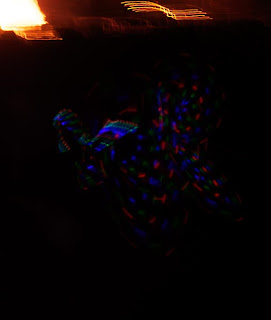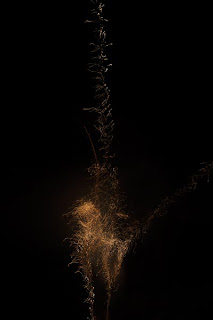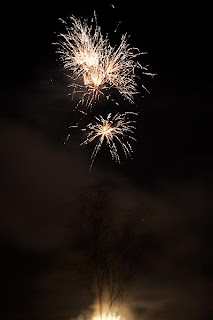If you have been following me on Facebook you may know by now that I have decided to shut up shop with Minute Film, I gave it a go but I have to be realistic, I am probably a little too narrow minded in my ideas about photography to be able to make a living out of it. I love photography for the things that it can do that other media cannot, there are a number of things that come into this category:
- the possiblity of choosing where the focus is
- the possibility of choosing how light or dark the result will be
- the ability to choose the perspective of your scene
- the capturing of movement
- the contrast and colour of the result
None of these things is, in itself, going to make a good picture but the intelligent application of these things to your photography is like having an infinite number of tools in your armoury.

So what now? Well, I guess I will carry on with my little private crusade, to promote - quietly - the idea that knowing about what makes photography 'work' will inevitably make you a better photographer - and get a job!
Crusade first: Photographically one of the really great cliches is Fireworks. They offer a wonderful spectacle but it is really difficult to be innovative since the technical restrictions imposed by the circumstances mean that you are going to get very similar results to everyone else. So what can you do? The best bet is to enjoy the fireworks and not take it too seriously.

 My fireworks were near my home, a very professional display put on by the local 'Lions' club. I agonised for ages about what equipment I would take with me, Epson RD1, Nikon D100, Olympus XA, Holga 120 or even a pinhole camera? I even thought for a while that I might see what I could do with just my iPhone! In the end I opted for the Nikon since I thought that it would be the easiest to use in the dark. I was also struggling to remember the correct settings for shooting fireworks and I knew that if I shot digital I'd be able to see that I was doing alright during the evening.
My fireworks were near my home, a very professional display put on by the local 'Lions' club. I agonised for ages about what equipment I would take with me, Epson RD1, Nikon D100, Olympus XA, Holga 120 or even a pinhole camera? I even thought for a while that I might see what I could do with just my iPhone! In the end I opted for the Nikon since I thought that it would be the easiest to use in the dark. I was also struggling to remember the correct settings for shooting fireworks and I knew that if I shot digital I'd be able to see that I was doing alright during the evening.The next big question... Tripod? Well, no. I admit to preferring the crispness of the lines you get with a tripod, but actually it is much less bother in a crowded field to just hold the camera as steady as you can and sometimes the movement adds a little something to the picture. so all of these pictures were shot hand held at 2 seconds! Not something to do in any other situation!
Fireworks are fun because you cannot really fail to get something as long as you know the basic rules, they are really bright but for only a short time in any part of the sky. Even if you get the exposure wrong then the pictures will probably be exciting.
My biggest problem was that I filled my CF card before the action had finished but I had such a great time anyway and was glad of the choices I had made regarding equipment.
The first picture is of a child waving an LED 'Light Sabre', there were Light Sabres, wands with a star on the top and spinning things with LED's on strings. I liked what happened to these in the dark with the long exposure. The final picture was of the fabulous bonfire they had just before the fireworks began, just pointing the camera at the sky above the fire, these are all the glowing embers making lovely swirling patterns in the sky. I was initially slightly disappointed that I could not get a clear shot without the tree but on reflection, especially in the picture with the multicoloured 'fan' it works quite nicely!
Minute Film as a business was a failure, I suspect that someone more agressively businesslike might have managed to squeeze a living out of it but that isn't really me. However, I have been involved in the photographic business for nearly 30 years, I got into it because I loved photography. Over these years though I have taken less and less photographs and had virtually given up taking pictures for fun.


Minute Film made me take pictures again, it made me because I needed examples to go on my website, firstly of Polaroid pictures and then of Holga pictures but as I took these pictures I started to see how the limitations of the equipment I was using made me think differently about what I was doing. In a very short time I had become fascinated by what I had undertaken and started to analyse what it was that was so compelling.
In short, I started Minute Film to earn money but it repaid me in a different way, it gave me back the love of photography that had dwindled away.
I don't know what job I will be doing in a month from now, I hope I will be doing something that I find interesting and rewarding - but what I know I'll be doing is that I'll be taking pictures and writing about my love for the magic that is photography.













 PlasticBullet
PlasticBullet  Lo-Mob
Lo-Mob 

 Hipstamatic stands alone among the others I tested since it is the only one that actually makes you choose things before you take your picture and it won't re process pictures from your library. In an odd way this makes it better than the others because it isn't just a 'post' product.
Hipstamatic stands alone among the others I tested since it is the only one that actually makes you choose things before you take your picture and it won't re process pictures from your library. In an odd way this makes it better than the others because it isn't just a 'post' product. CameraBag I thought was very disappointing, 14 pre-set 'filters' which can be used on new or existing pictures but there is no editing available and the cropping is arbitrary. I quite liked this version though...
CameraBag I thought was very disappointing, 14 pre-set 'filters' which can be used on new or existing pictures but there is no editing available and the cropping is arbitrary. I quite liked this version though...




















